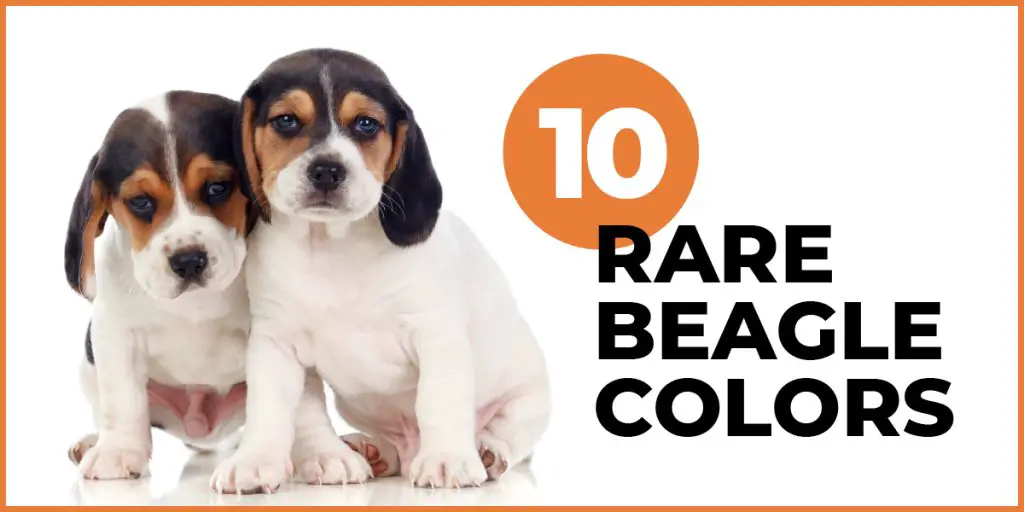Have you heard of the ‘Ghost Beagle'? This nickname often describes one of the rare beagle colors: lemon. One sunny afternoon, a dog enthusiast noticed a Beagle at the shelter with a pale coat shimmering like a ghostly glow. This was a rare lemon Beagle, a scarce color like a treasure. These unique hues offer a glimpse into the extraordinary palette of one of America's most beloved breeds. Join us on a journey to uncover more of these rare beagle colors and see nature's artistry at its finest!
Key Takeaways
- Beagles are known for their variety of coat colors, and while the classic tri-color is common, there are several rare shades like pure white, lilac, blue, solid black, and chocolate tri-color, as well as unique patterns such as silver tri-color, red and black, hare-pied, badger-pied, lemon-pied, and the black and tan Beagle.
-
Distinctive markings such as ticked, spotted, and white markings not only contribute to the aesthetic uniqueness of each Beagle but can also be linked to genetic factors that may correlate with specific health issues.
-
When choosing a Beagle, the allure of a rare coat color can be strong. However, it's essential to prioritize the dog’s overall health and temperament over appearance. Potential health concerns linked to certain coat colors should be carefully considered to ensure the well-being of the dog.
Find out how to train your beagle to be the well-behaved pup you desire – Read Free Report
10 Rarest Beagle Colors
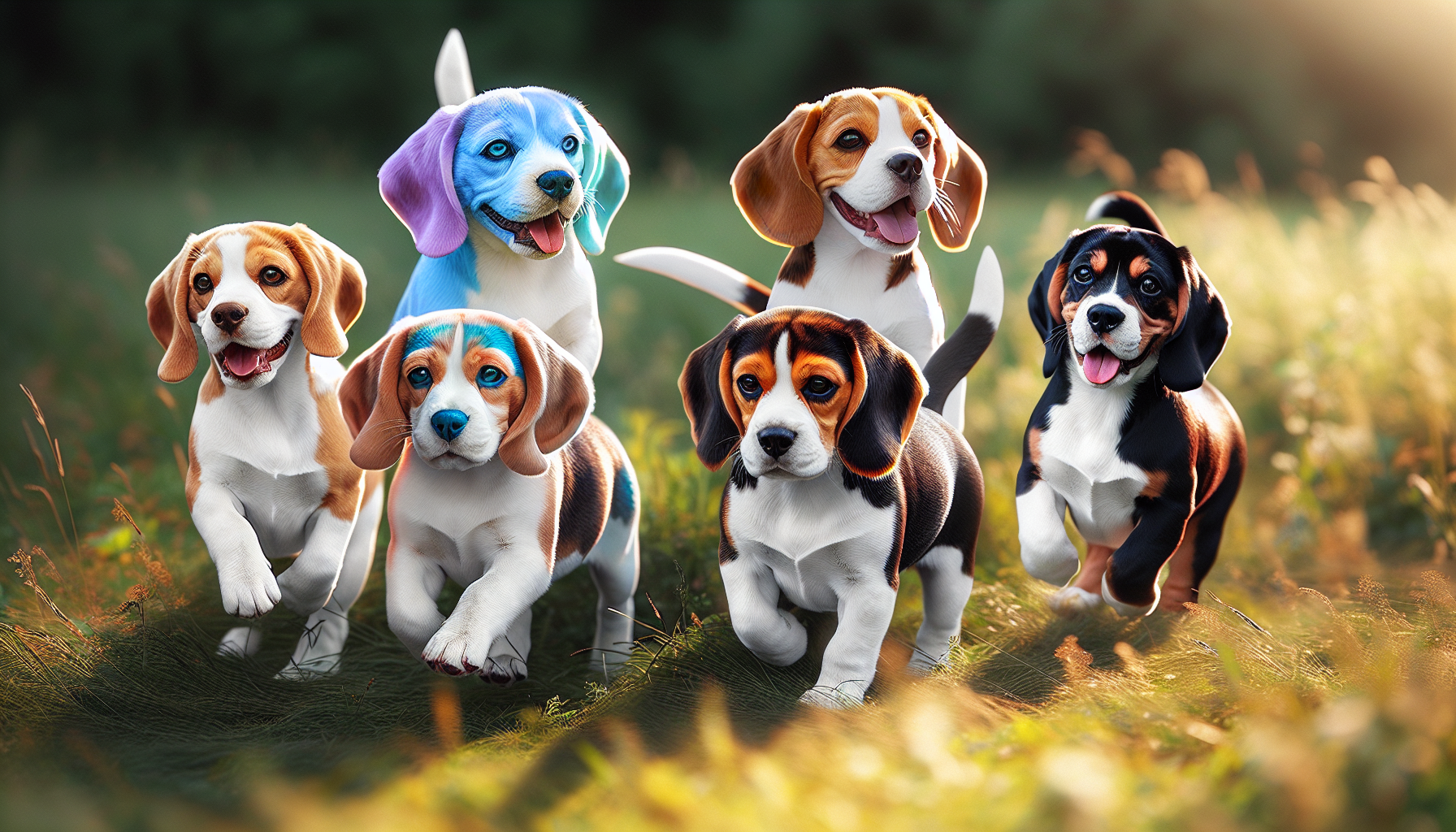
Image created using AI
Beagles are celebrated not only for their cheerful dispositions and remarkable scent-tracking abilities but also for their diverse coat colors. While many are familiar with the standard shades, there exists a palette of rare colors that captivate and intrigue. From the ghostly allure of pure white to the subtle elegance of lilac, these unique hues are particularly striking in purebred Beagles. Even the tan Beagle, while more common, possesses a special allure for canine aficionados.
Join us as we embark on a vibrant exploration of the top 10 rarest Beagle colors, where we'll uncover the distinct characteristics and genetics behind each, and discover what makes these colors so rare and sought after. Prepare for a colorful adventure into the world of Beagles!
1. Pure White Beagles
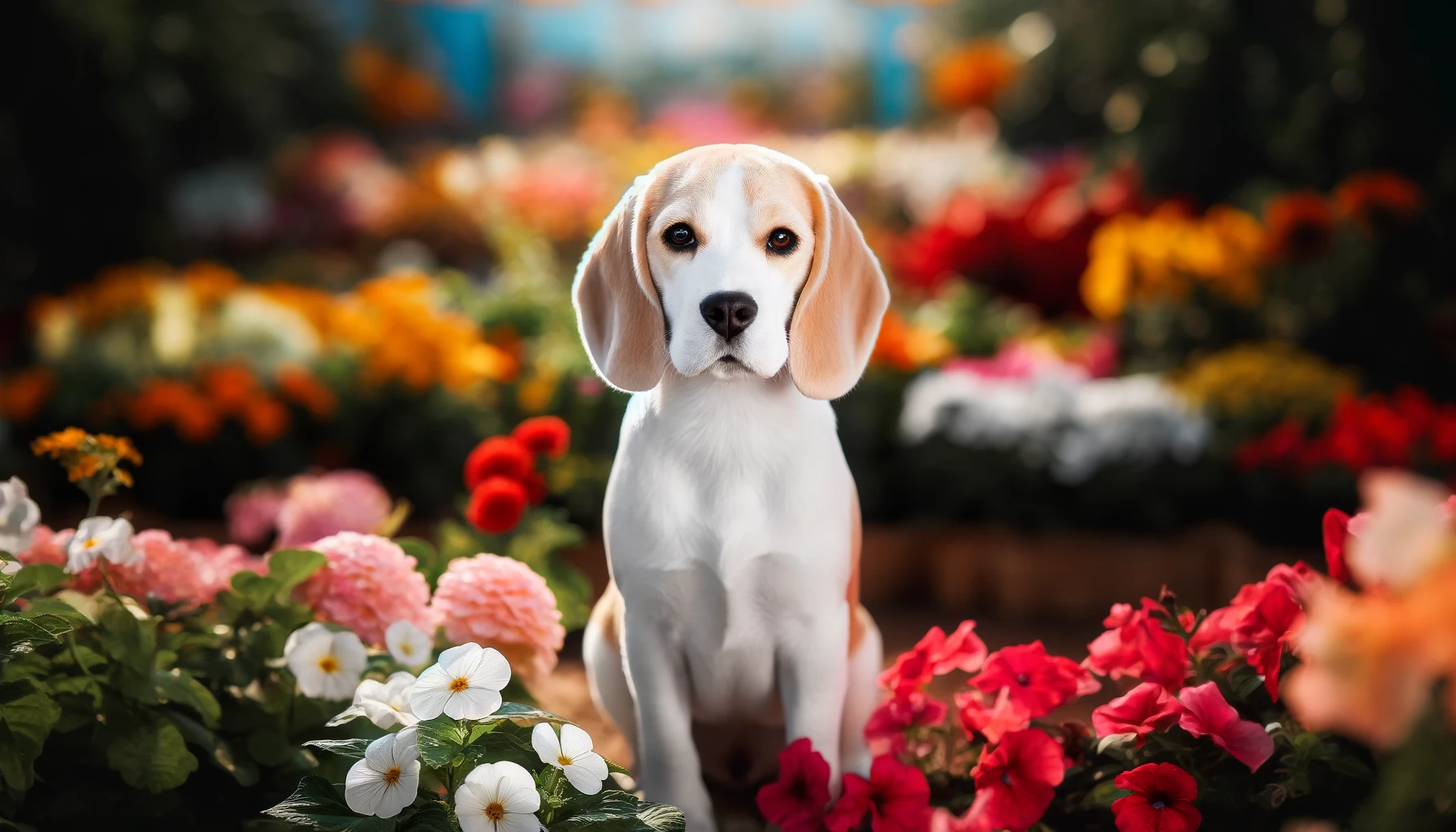
Image created using AI
Envision a Beagle as immaculate as the first snowfall of winter—that's the allure of the pure white Beagle. This striking coat color, characterized by its complete lack of pigment, sets them apart as extremely rare within the breed. The secret to their snowy fur lies in their genetics, specifically the MITF (Microphthalmia-Associated Transcription Factor) gene, which inhibits pigment production, resulting in their pristine white coats.
However, this beautiful coloration does come with its complications. Pure white Beagles may have genetic peculiarities and are sometimes prone to developing darker markings as they age, particularly on their ears and other parts of their body. This can lead to a distinctive white and tan appearance as they mature.
2. Lilac Beagles
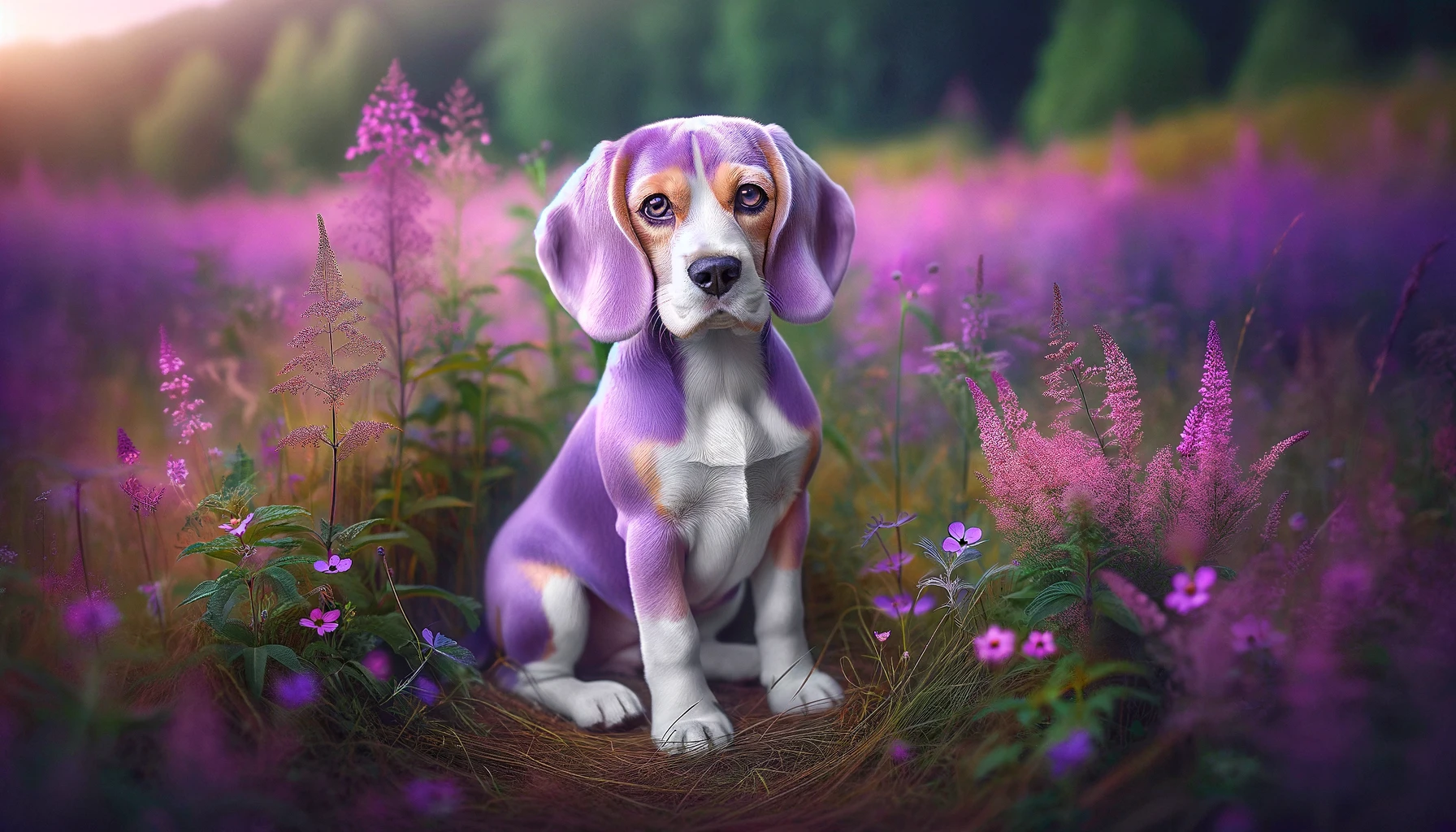
Image created using AI
Lilac Beagles stand out in the array of Beagle coat colors with their unusual bluish-black tint, adding a layer of unique charm to their appearance. Despite their eye-catching look, the American Kennel Club (AKC) does not officially recognize this color. The lilac shade in Beagles results from a specific genetic combination: the dilution gene (d) paired with the co/co gene, which together alter the typical black coat to a softer bluish-black.
Although rare and not commonly bred, lilac Beagles make a memorable impact whenever they are seen. Their distinctive coat not only highlights their rarity but also sparks interest and admiration from dog enthusiasts and the general public alike.
3. Blue Beagles

Image created using AI
Blue Beagles dazzle with a unique gray-blue coat that sparkles under the sun, particularly alongside their tan markings. This rare coloring emerges from a genetic trait that dilutes their traditional black coat to a deep, mesmerizing blue. As Blue Beagles mature, this distinctive pigmentation becomes apparent in their eye rims, lips, paw pads, and nose, enhancing their striking appearance.
The rarity of the Blue Beagle is due to the dilution gene required for this coloration, which involves two copies of the dilute allele transforming black eumelanin to blue. Despite their scarcity, Blue Beagles are recognized by the American Kennel Club within the bluetick category, making them eligible for conformation events. This recognition ensures that these uniquely colored Beagles can showcase their beauty and rarity in official dog shows.
4. Solid Black Beagles

Image created using AI
Solid black Beagles are captivating with their coats as dark as a moonless night, a rare sight within the breed. Recognized by the American Kennel Club, these Beagles owe their deep, uniform black coloration to the dominant black gene (K^B allele) at the K locus, which sets them apart in appearance from their more commonly colored counterparts.
Finding a solid black Beagle can be a challenge due to their rarity, but discovering one is especially rewarding for Beagle enthusiasts. The distinctiveness of their coat makes these dogs a cherished rarity among dog lovers, celebrated for their unique beauty and the elegance they bring to the breed.
5. Chocolate Tri-Color Beagles
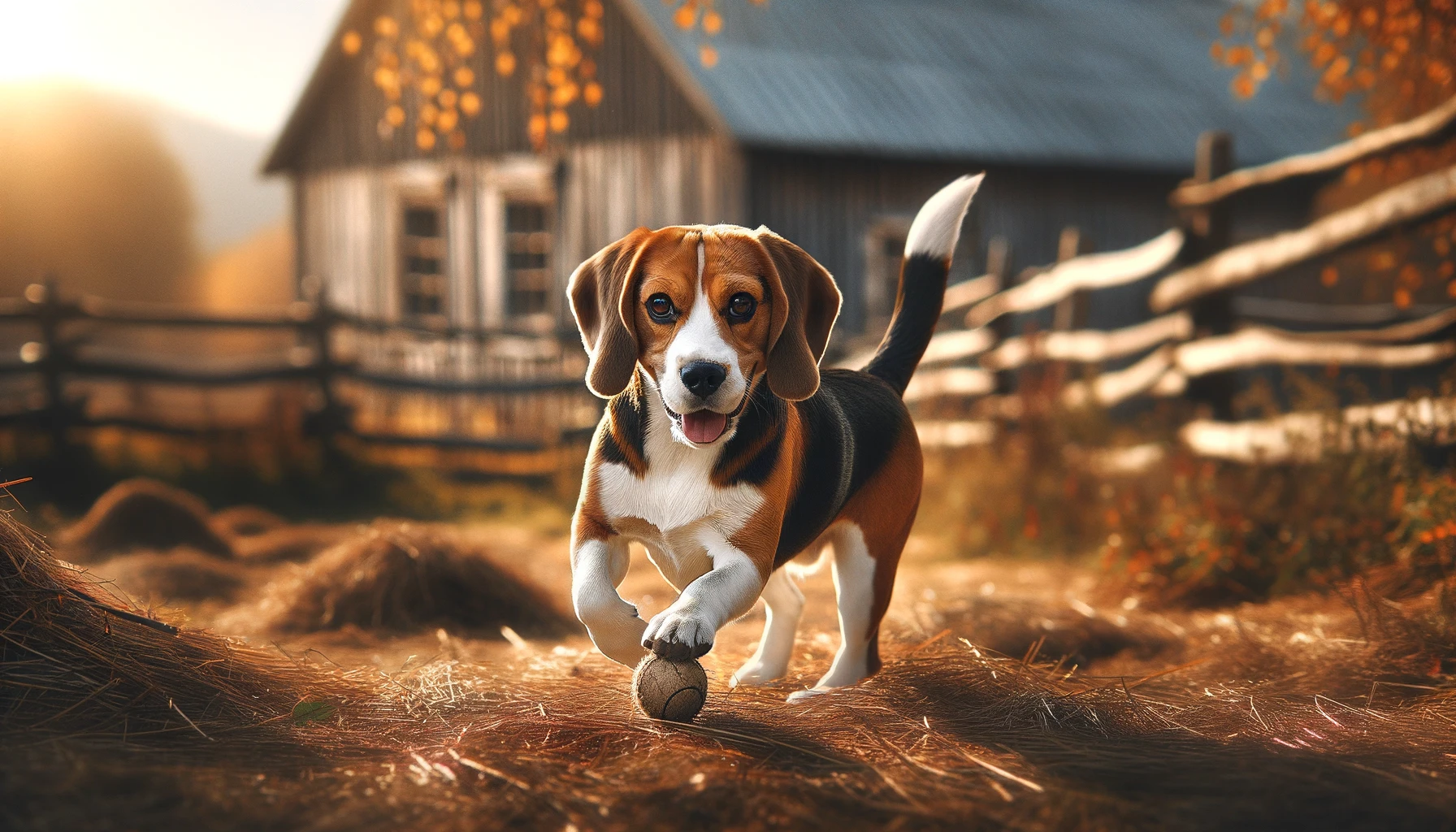
Image created using AI
Chocolate tri-color Beagles present a visually striking variation within the breed, marked by their rich chocolate brown saddle that replaces the traditional black. This unique coat pattern creates a vivid contrast against the classic white and tan markings, appealing to those who appreciate a distinctive canine appearance.
This rare coat color arises from a recessive mutation (b/b), which changes all the eumelanin in the coat to a deep brown, setting these Beagles apart. Alongside their unusual saddle color, these dogs often have a liver-brown nose, which adds to their overall charm and makes them particularly attractive among the various Beagle colors.
6. Silver Tri-Color Beagles

Image created using AI
Silver tri-color Beagles shimmer like moonlight in the Beagle lineup. Their coat has a unique silver color on their back, owing to a diluted black coat. Their genetic makeup, specifically the genes at the B-Locus, D-Locus, and E-Locus, contributes to this unusual coloration.
Silver tri-color Beagles are considered a rare variation among Beagle colors. Despite the similarities with blue tri-color Beagles, breeders might call a blue tri-color Beagle a silver tri-color because the bluish color can look like a silver shade. Tri colored beagles, such as these, showcase the diverse range of colors within the breed.
7. Red and Black Beagles
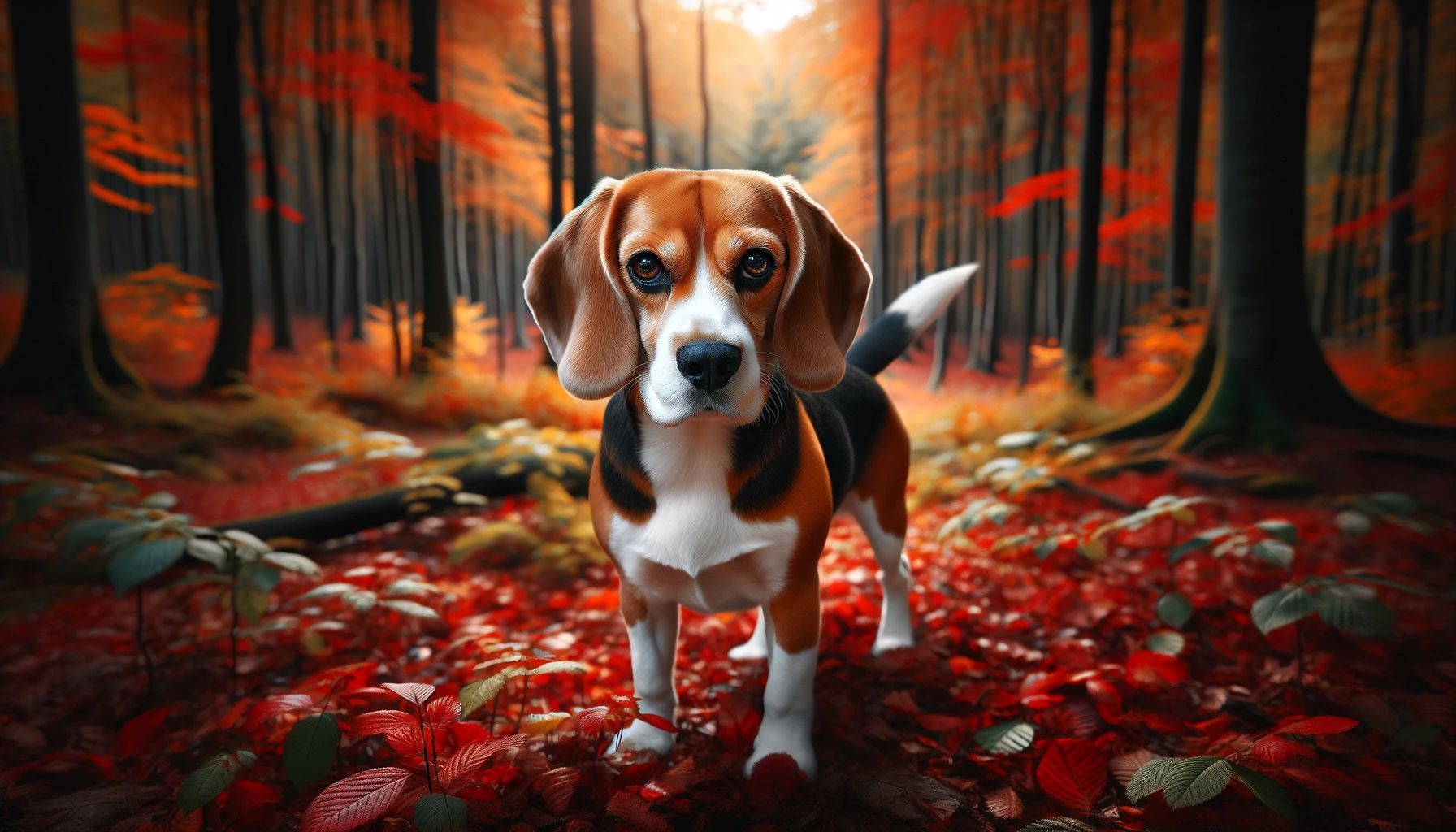
Image created using AI
Red and black Beagles evoke the imagery of a fiery sunset giving way to the night, with a dark orange hue blending into the red base coat. They have a red base coat with black markings on their heads and backs, creating a striking contrast. This distinctive combination is quite rare among Beagles.
The MC1R gene is responsible for the red and black coloration in Beagles. Although these Beagles stand out because of their unique color combination, it’s also essential to remember that they need regular grooming like all Beagles, including coat brushing and ear cleaning.
8. Hare-Pied Beagles
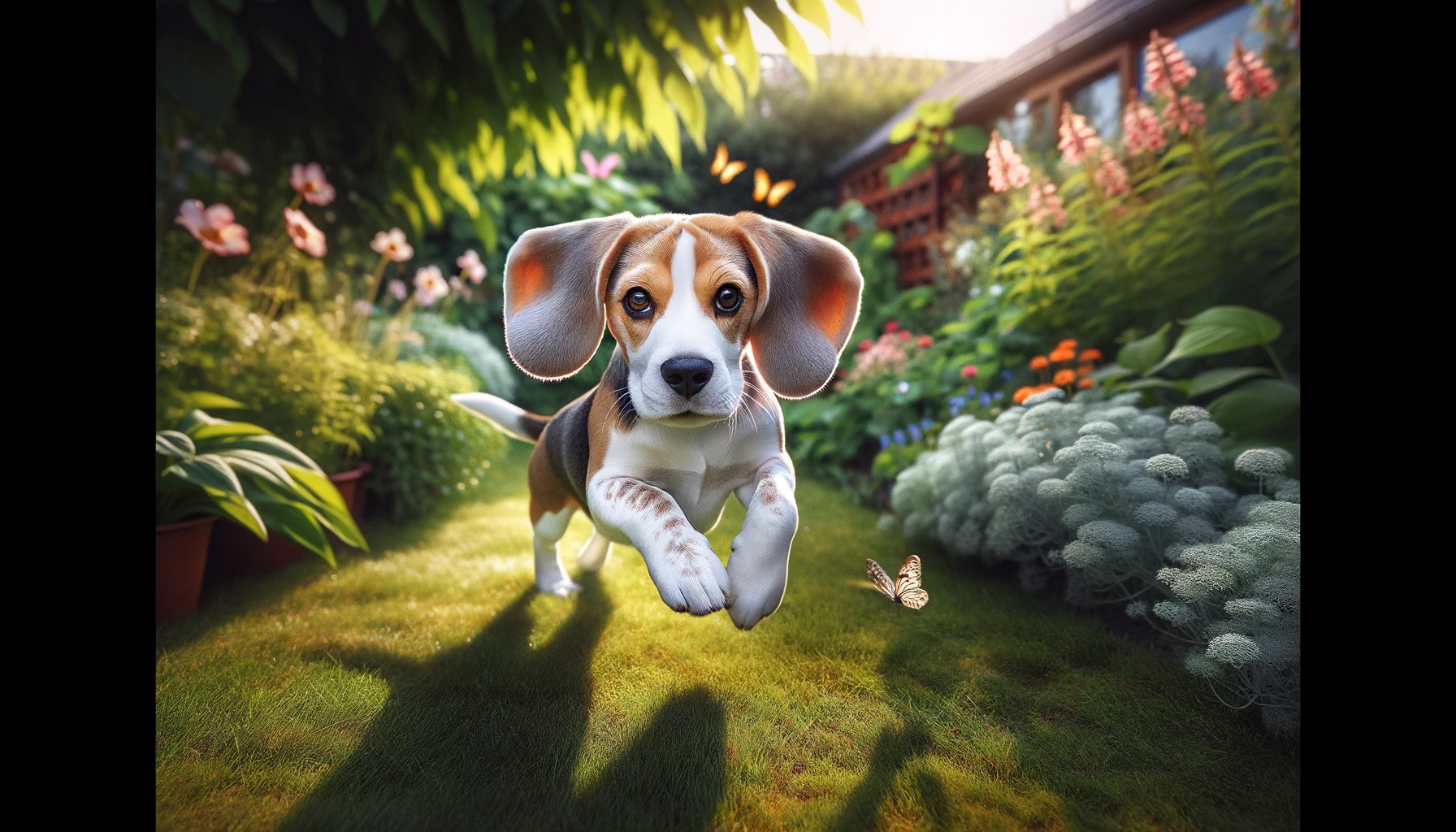
Image created using AI
Hare-pied Beagles are easily recognized by their predominantly tan coats with black-tipped hairs, resembling wild hares. Their distinctive ‘butterfly-nose' with dark rims and a pale center adds to their expressive faces. The domino allele influences their unique patterning by restricting eumelanin production, which reduces black areas on their coats. While not rare, this allele gives hare-pied Beagles a distinctive identity among their breed, making their unusual and striking coloration stand out.
9. Badger-Pied Beagles
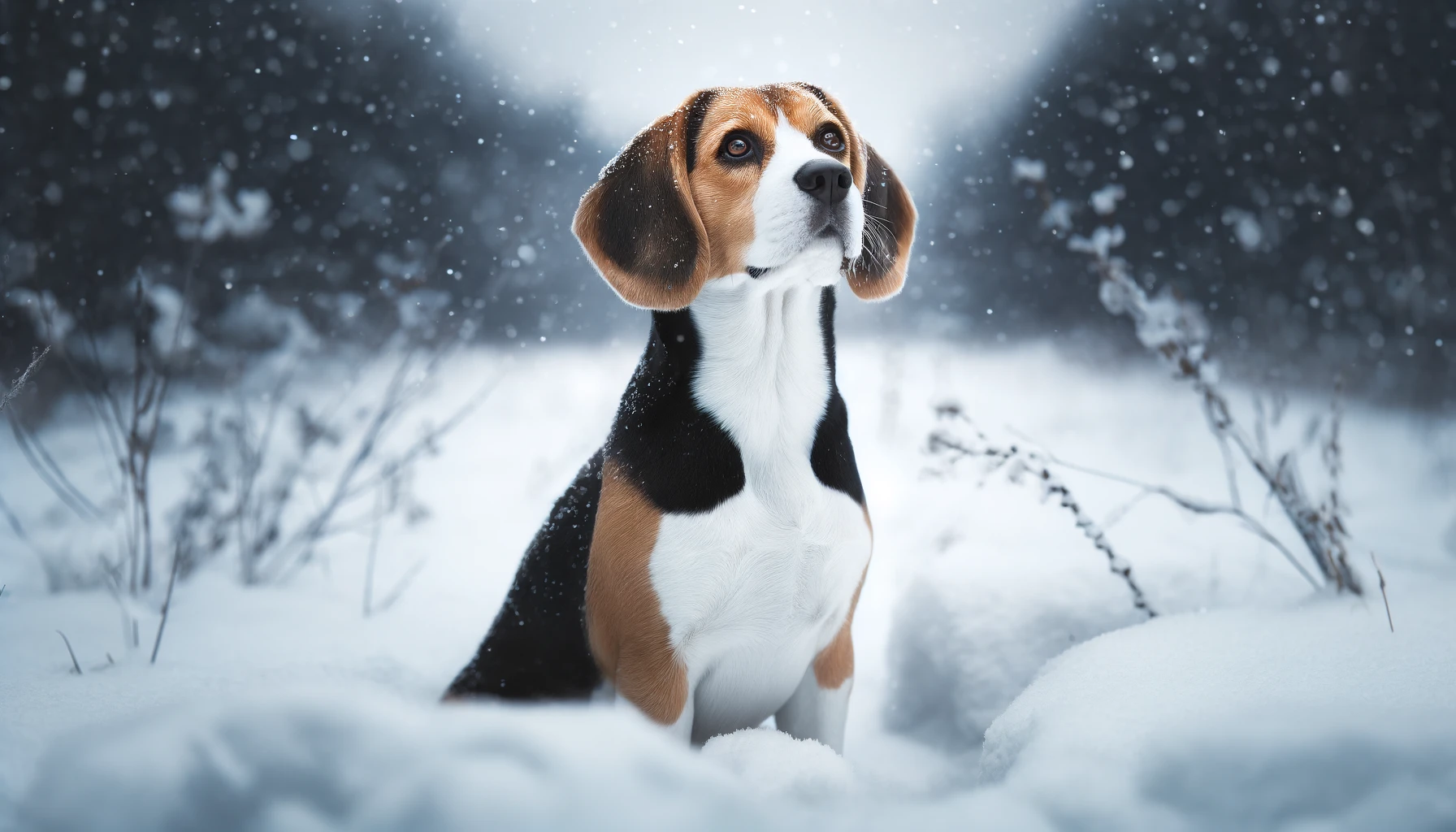
Image created using AI
Badger-pied Beagles, with their striking mix of black, silver, and fawn coats, visually recall the playful badgers of the forest. This unique color pattern results from specific genetic variations that may manifest in later generations, contributing to its occasional appearance in the breed.
As these Beagles age, the distinctive badger-pied pattern may fade, which adds to the rarity of this coloring. Despite its unique appearance, the badger-pied coloring is among the more frequently observed colors in Beagles, distinguishing it as both common and notably distinctive within the breed.
10. Lemon-Pied Beagles
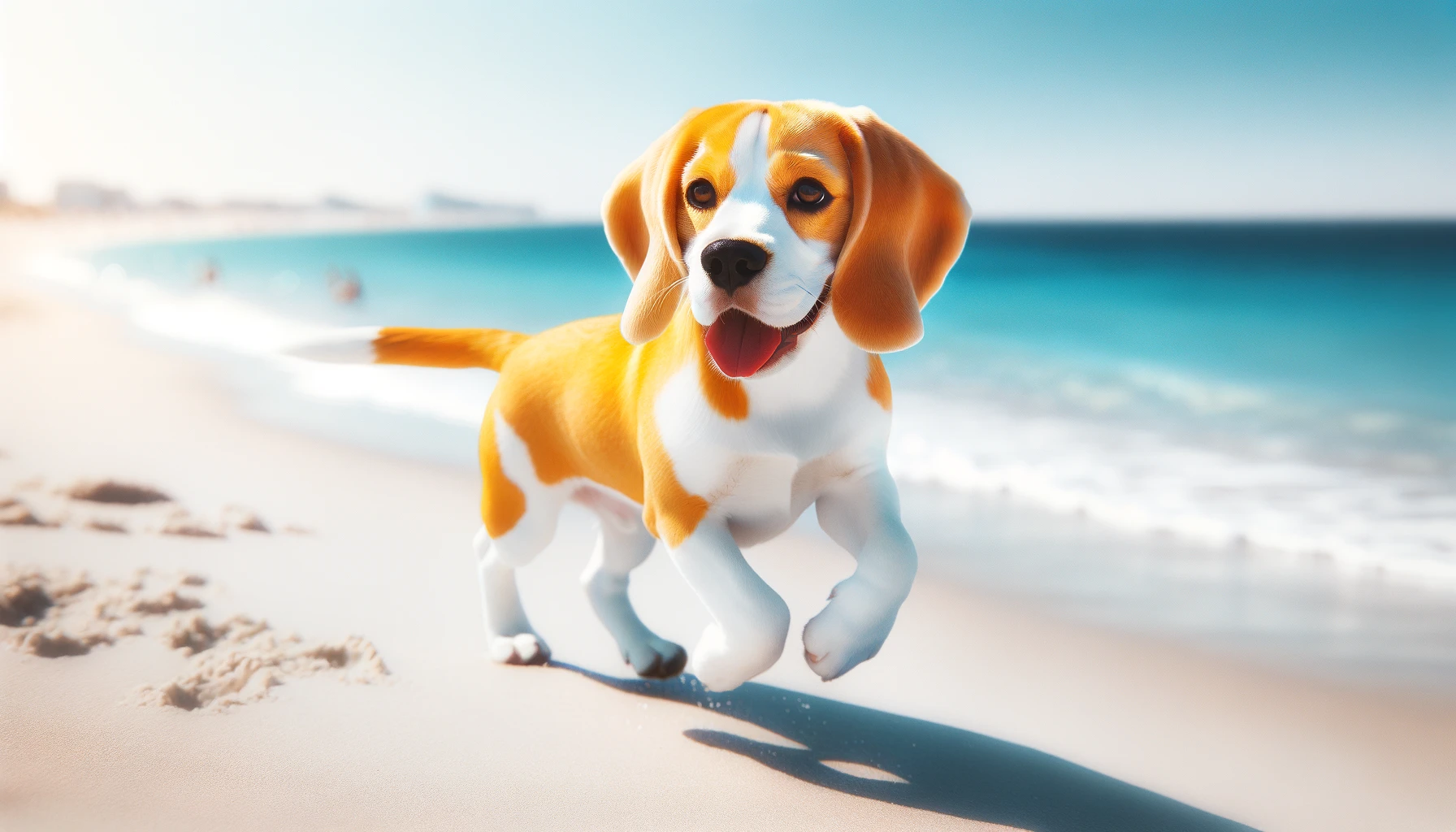
Image created using AI
Lemon-pied Beagles, often simply called lemon Beagles, evoke the refreshing zest of lemons on a sunny day. These dogs feature a tan and white coat with a light tan pigment that contains very few to no black hairs, setting them apart with distinctive lemon patches that differentiate them from other tan Beagles.
The unique lemon-pied coat color results from a genetic interaction known as the saddle domino effect. This genetic interplay between the domino and saddle patterns significantly reduces the presence of black hairs, yielding a predominantly tan coat. While it’s a rare color variation, it appears only under specific genetic conditions, making lemon-pied Beagles a special find among the breed.
Markings That Set Beagles Apart
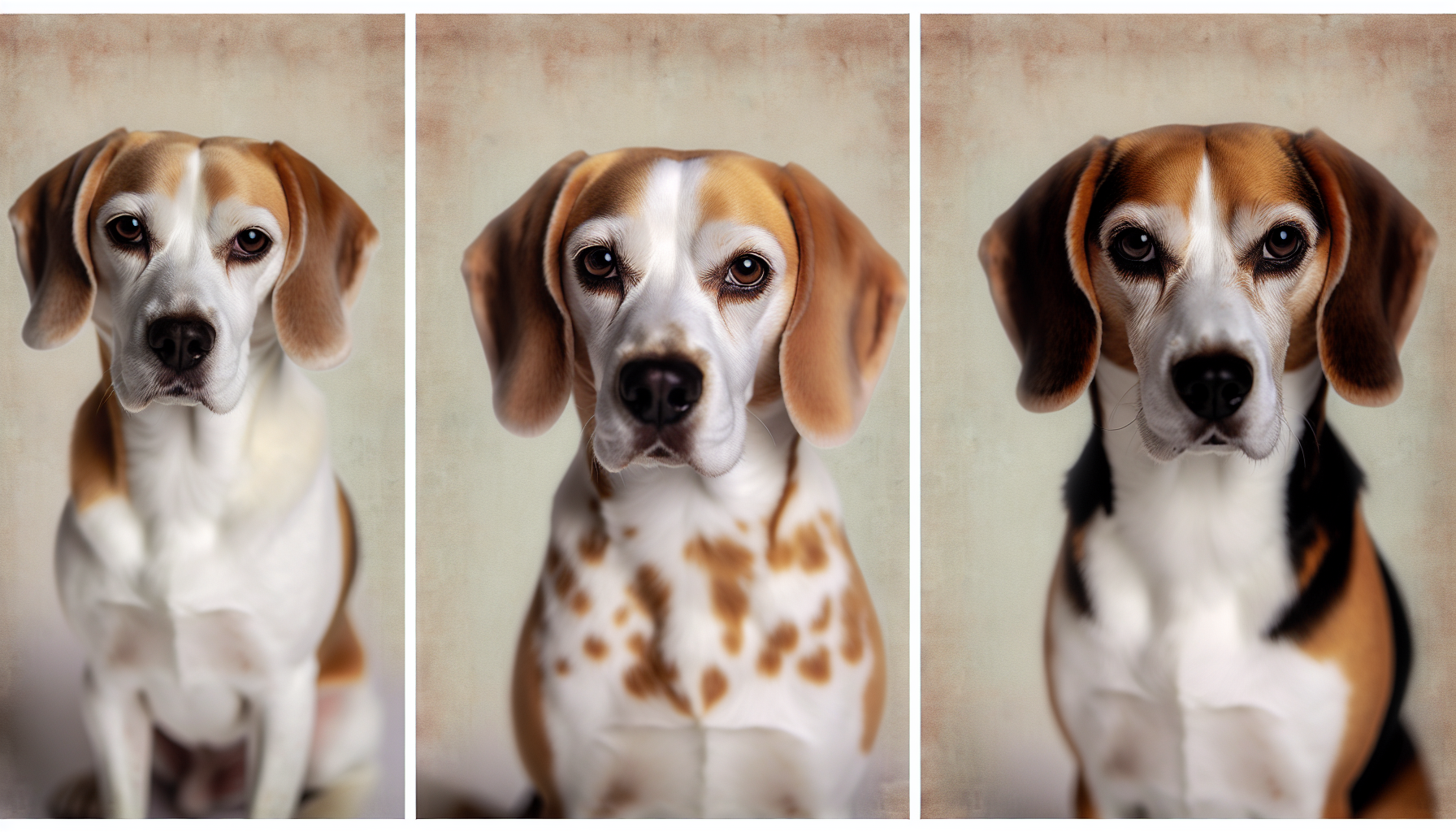
Image created using AI
Beagles are not only cherished for their diverse coat colors but also for their distinctive markings, which enhance their charm and individuality. Each Beagle is unique, marked by a combination of ticked, spotted, or plain white patterns that contribute to their distinctive appearances.
These markings do more than just add visual appeal; they underscore the uniqueness of each Beagle, contributing to the breed's captivating allure. Let's delve deeper into these specific markings to better understand how they make each Beagle stand out.
Ticked Markings
Ticked markings give Beagles a distinctive look, resembling a scattering of freckles across their coats. These patterns are particularly noticeable in blue and red tick Beagles as they grow older, influenced by genetic factors that affect coat pigmentation. The specific genes responsible for these markings are not fully identified, but they contribute to the unique appearance of each dog.
These markings vary in size and location, appearing anywhere on the Beagle's body. This variability not only adds to the individuality of each Beagle but also enhances their overall distinctiveness, making each one uniquely identifiable.
Spotted Markings
Spotted markings on Beagles appear as distinct, dark spots against their lighter or white base coats, resembling stars twinkling against the night sky. These spots are genetically determined and can be visible from birth, growing more distinct as the dog matures.
These genetic markings are linked to the gene that produces white coloring in mammals, which can also influence other traits such as blue eyes and, occasionally, deafness. This highlights a notable genetic and health correlation, emphasizing the complexity of breeding and genetics in Beagles with such unique coat patterns.
White Markings
White markings on a Beagle's coat, reminiscent of fluffy clouds against a clear sky, often appear in dogs with two or three-color coats, enhancing their visual appeal. The Microphthalmia Associated Transcription Factor (MITF) gene influences these distinctive markings, adding to the aesthetic uniqueness of Beagles. This gene plays a role in developing color patterns, which explains why some puppies may grow into red and white Beagles, showcasing the fascinating role of genetics in determining their appearance.
Beagle Coat Color Genetics
The variety in Beagle coat colors is due to the genetic interplay affecting two main pigments:
- Eumelanin: Determines shades of black and brown in the coat.
- Pheomelanin: Controls red and yellow hues.
Key points about Beagle coat color genetics include:
- Color Variations: Beagles can have a wide range of colors including:
- Orange
- Mahogany
- Black
- Brown
- Blue
- Lilac
- Pigment Interaction: The presence and interaction of phaeomelanin and eumelanin dictate these color variations.
- Patterns and Markings: Beagles may also display diverse patterns and markings like spots or patches, adding to their unique appearance.
These genetic factors not only determine the base color but also influence the distinct patterns and markings that contribute to the individuality of each Beagle.
Health Concerns Related to Rare Beagle Colors
While rare Beagle colors are visually appealing, they can sometimes come with health risks. For example, blue Beagles are susceptible to color dilution alopecia, a genetic condition that can cause hair thinning, hair loss, and skin irritation. Similarly, white Beagles, with their reduced pigmentation, are more vulnerable to skin sensitivity and sunburn, and may also face a higher risk of vision problems.
When selecting a Beagle, the excitement of choosing a unique coat color should be balanced with awareness of potential health issues. Prospective owners must consider these factors to ensure they can provide the necessary care for their Beagle.
Choosing a Beagle: Beyond Coat Colors
While the color of a Beagle’s coat might initially catch your eye, it’s pivotal to keep in mind that health and temperament ought to be your chief considerations. After all, a healthy and happy Beagle, regardless of coat color, makes for a wonderful companion.
Opting for a reputable breeder who prioritizes the health and well-being of their Beagles is of utmost importance. A good breeder would always be willing to provide information about the puppy’s parents, offer references, and allow you to visit their facility.
Remember, a Beagle’s charm lies not just in its beagle’s coat color but in its lively personality, hearty health, and the undeniable cuteness of beagle puppies!
Summary
Beagles dazzle with a spectrum of coat colors, from the classic tri-color to the less common lilac and silver. The fascinating genetics behind these variations reflect a complex interplay of genes that create their vivid coats. However, the true charm of Beagles extends beyond their appearance. Their joyful nature, sharp minds, and deep loyalty capture hearts far more than their colors could. Next time you spot a Beagle, look beyond its coat and cherish the vibrant personality that truly makes this breed special. Explore these tales further to appreciate the full spectrum of Beagle beauty.
Frequently Asked Questions
What is the rare beagle color?
The rare beagle color is lemon, which is a pale yellow or cream color with or without tiny spots, and may have some white markings but should not be entirely white.
What is the rarest breed for beagle?
The rarest breed for a beagle is the Lemon Beagle, as it is the most uncommon type of beagle.
Are bluetick beagles rare?
Yes, Bluetick Beagles are considered rare compared to other varieties of purebred beagles.
What are the common health concerns associated with rare Beagle colors?
Some rare Beagle colors like blue and white may come with health concerns such as color dilution alopecia for blue Beagles and sensitivity to sunburn and potential blindness for white Beagles. Be mindful of these potential health issues if you have a Beagle with these rare colors.
What are the different types of markings on Beagles?
Beagles can have ticked, spotted, and white markings that add to their individuality and make each Beagle distinct. These markings make each Beagle unique and easily distinguishable.
Learn how to train your beagle to be the well-behaved dog you desire –> Access our Free Report
Shop for beagle-themed products and gifts that beagle enthusiasts will love.

